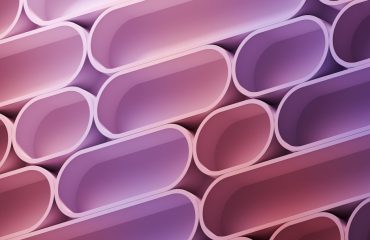body { font-family: sans-serif; line-height: 1.6; }
h1, h2, h3 { color: #333; }
img { max-width: 100%; height: auto; }
Steel, renowned for its strength and durability, often carries a reputation for being a poor insulator. However, advancements in material science have led to the development of thermally insulated steel profiles, effectively bridging the gap between structural integrity and thermal efficiency. These innovative profiles are revolutionizing construction, offering a compelling blend of performance and sustainability. This comprehensive guide delves into the world of thermally insulated steel profiles, exploring their key features, applications, and future prospects.
Understanding the Core: How Thermally Insulated Steel Profiles Work
Thermally insulated steel profiles achieve their remarkable thermal performance through the incorporation of a high-performance insulating material within the steel structure. This typically involves a core of polyurethane foam, polyisocyanurate (PIR), or mineral wool sandwiched between two layers of steel. This carefully engineered design creates a thermal break, significantly reducing the transfer of heat or cold through the profile. The insulating material’s low thermal conductivity (λ-value) is crucial in minimizing energy loss. The outer steel layers provide the necessary strength and rigidity, ensuring the profile can withstand the stresses of construction and environmental factors.
Superior Thermal Performance: The Key Advantage
The primary benefit of thermally insulated steel profiles lies in their superior thermal performance. Compared to traditional steel sections, these profiles boast significantly lower U-values (a measure of thermal transmittance). Lower U-values translate directly into reduced energy consumption for heating and cooling. This contributes to lower energy bills, a smaller carbon footprint, and improved indoor comfort. The effectiveness of the thermal break is dependent on factors like the type and thickness of the insulating material, the design of the profile, and the quality of the manufacturing process. Careful selection and design are essential to maximize thermal performance.
Diverse Applications: Where Thermally Insulated Steel Profiles Excel
The versatility of thermally insulated steel profiles makes them suitable for a wide range of applications. They are increasingly popular in:
- Curtain wall systems: Providing excellent thermal performance in high-rise buildings and commercial structures.
- Doors and windows: Enhancing energy efficiency and improving sound insulation.
- Industrial buildings: Offering a robust and thermally efficient solution for warehouses, factories, and cold storage facilities.
- Residential construction: Improving the energy performance of homes and reducing heating and cooling costs.
- Cold chain logistics: Maintaining consistent temperatures in refrigerated transport and storage.
Manufacturing Process: Precision and Quality Control
The manufacturing process for thermally insulated steel profiles is a sophisticated operation requiring precision and quality control at every stage. It typically involves:
- Steel forming: The steel sheets are shaped into the desired profile using specialized rolling mills.
- Insulation injection: The insulating material is precisely injected into the formed steel profile, ensuring complete filling and minimizing voids.
- Curing: The injected insulation is cured to achieve its optimal density and thermal properties.
- Quality control: Rigorous testing is conducted to ensure the profile meets the required specifications for thermal performance, strength, and durability.
- Finishing: The profiles may undergo surface treatments like powder coating to enhance corrosion resistance and aesthetics.
Future Trends and Innovations in Thermally Insulated Steel Profiles
The field of thermally insulated steel profiles is constantly evolving. Future trends include:
- Improved insulation materials: Research and development are focused on developing even more efficient insulating materials with lower thermal conductivity and enhanced fire resistance.
- Advanced design techniques: Computational fluid dynamics (CFD) and other simulation tools are being used to optimize profile designs for maximum thermal performance.
- Sustainable manufacturing processes: Efforts are underway to reduce the environmental impact of manufacturing by using recycled materials and minimizing energy consumption.
- Integration with smart building technologies: Thermally insulated steel profiles may be integrated with sensors and control systems to optimize energy usage and enhance building performance.
- Increased use of recycled steel: The industry is moving towards greater utilization of recycled steel in the manufacturing process, promoting circular economy principles.
In conclusion, thermally insulated steel profiles represent a significant advancement in building materials, offering a compelling combination of strength, durability, and energy efficiency. Their growing popularity across diverse applications underscores their importance in creating sustainable and high-performance buildings for the future.
Tags: Thermally Insulated Steel Profiles, Insulated Steel Sections, Steel Thermal Break, Energy Efficient Steel, Sustainable Building Materials




